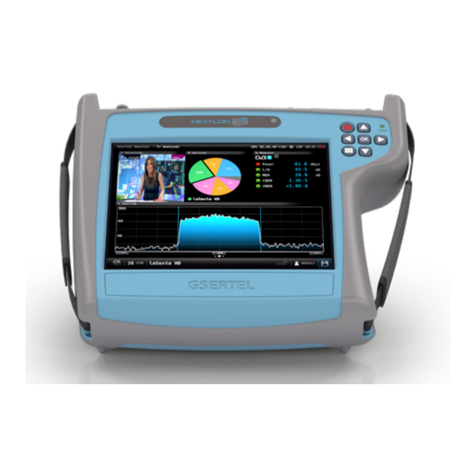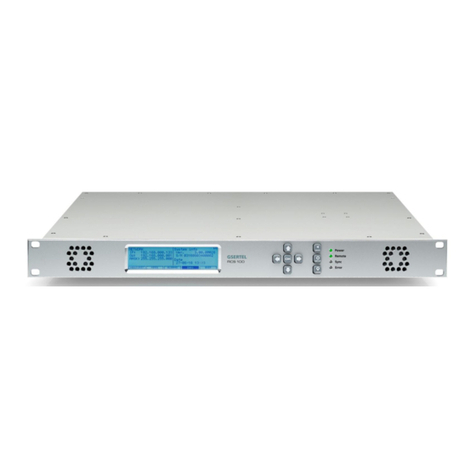
RCS Professional Monitoring Platform
4
qualied service personnel.
Heat
- The product should be situated away from heat
sources such as radiators, heat registers, stoves, or
other products (including ampliers) that produce
heat.
- Do not place naked ame sources on the meter,
such as lighted candles.
Electrical Supply, Grounding, and Surge Protection
Ensure that all local or national electrical codes are
followed. The products of safety class I with movable
power and single plug can only be plugged into
sockets with safety pin and protective conductor
connected.
In case of products with double
power supply, please make sure
you disconnect the two of them
before handling the unit.
The interruption of the protective conductor is
prohibited in both the plug and the meter. The
disruption may result in the risk that the product is a
source of electric shock.
Do not overload wall outlets, extension cords or
power strips as this may cause re or electric shock.
Class
- Operation of this equipment in a residential
environment may cause radio interference.
Symbols and safety labels
Recycle or dispose of used electronic
devices properly
Shock hazard
Noisless (clean) earth (ground)
Input power / Alimentación: 12V ; 2A, 24W
0916
Ref. 593304
Recycle or dispose of used electrical and
electronic devices properly.
H30Flex
100% Designed, Developed, and
Manufactured by Televes Corporation
Replace the batteries only with the same type.
Reemplace las baterías sólo por el tipo
recomendado.
Deposite los residuos de aparatos eléctricos y
electrónicos en los contenedores al efecto.
S.N.- 09169999900011
Made in Spain
DVB-S/S2 + DVB-T/T2 + DVB-C
A00383
Connector / Conector: P1J
Sample. Not for sale
Safety requirements
Product inspection
- Inspect the equipment for shipping damage.
Should any damage be discovered, immediately
le a claim with the carrier.
Read and Follow All Instructions
- All the safety and operating instructions should
be read prior to and followed while operating
this product.
Do not obstruct the ventilation slots
Cleaning
- Follow the cleaning instructions contained in
the Maintenance section of this manual.
Water and Moisture
- This product is not water resistant.
- Do not use in conditions where condensation
may exist.
- The entry of water increases the risk of electric
shock.
Power Sources
- This product should be operated only from the
type of power source specied (12VDC - 4A).
-Ensure that the voltage applied to the power
connector does not exceed 15V. Higher voltages
could damage the equipment
- Maximun consumpted current: 4A
RF connector electrical protection
- Maximum VAC: 18VAC
- Maximum positive VDC: 58V
- Maximum negative VDC: -18V
Grounding or Polarization
- Do not bypass or defeat electrical plug
polarization or grounding. Doing so will violate
the warranty and may pose a risk of re or
electrocution.
Wire Protection
- Ensure all connected wiring is routed correctly
to avoid damage including pinching, excessive
bends, or compression. Never use the product if
damaged cable network connection.
Power Lines
- Always use caution and avoid operating this
or any connected equipment near uninsulated
power lines or any other hazards.
Servicing
- There are no user serviceable parts except the
battery pack. Do not attempt to service this
product or remove covers. Refer all servicing to






























